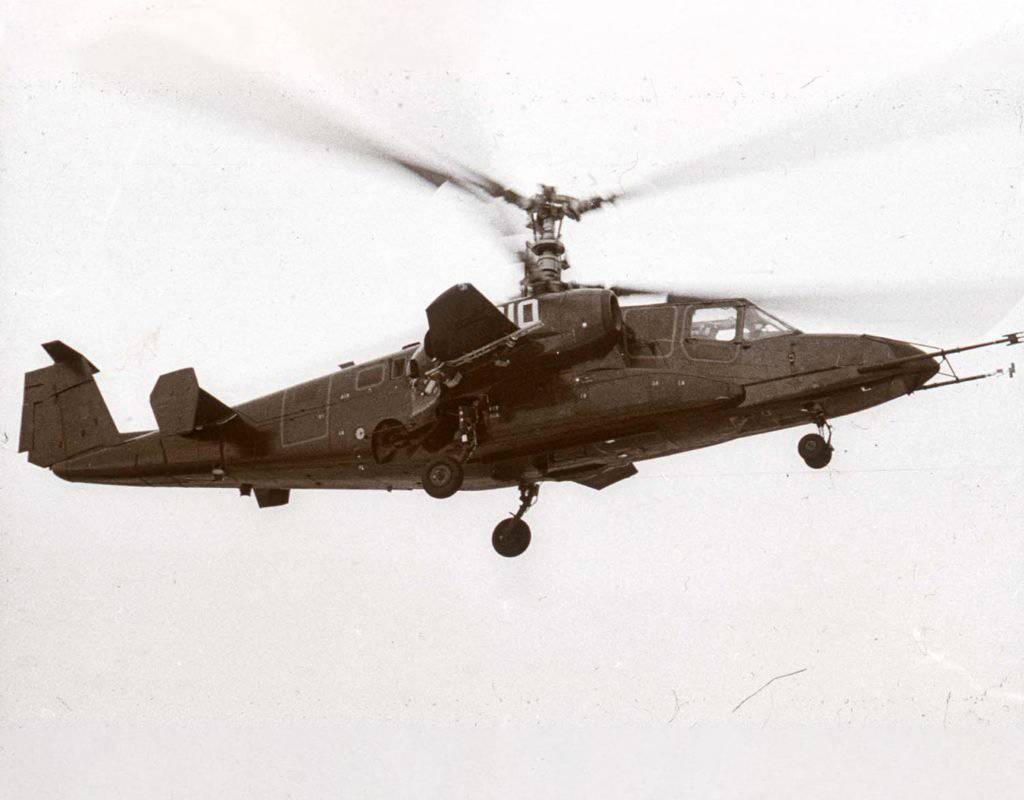
On Jun. 17, 1982, test pilot Nikolai Bezdetnov of the Kamov Design Bureau (currently National Helicopter Center Mil&Kamov, part of the Russian Helicopters holding company under Rostec State Corporation) made the first flight on a prototype of the Ka-50 multipurpose attack helicopter, also known as the “Black Shark.” According to Bezdetnov, the first prototype was colored white: It was disguised as a passenger version by painting false windows and doors to its fuselage. The model was carefully hidden in a special hangar and flown only high in the clouds or late in the evening.
In 1992, 10 years later, this helicopter was presented at the Farnborough Air Show (UK) with text “Werewolf” and an image of such creature painted on its tail. Today the Ka-50 is better known as the Black Shark. It received this name after a feature film of the same name in 1993, in which the helicopter played the main role.
The helicopter was successfully tested and, after revision, put into service. Its design is considered revolutionary due to the original single-seat cockpit layout. The navigator crewman in Ka-50 was actually replaced by an electronic system, considered very advanced at that time. The pilot of the Black Shark was protected by a fully armored cockpit that could withstand a direct hit from 23 mm caliber shells. The cockpit glass was not afraid of explosion fragments or large-caliber firearms.
The Black Shark received its baptism of fire in counter-terrorist operations in mountainous terrain, in difficult weather conditions and with active opposition from the enemy.
On the order of the Russian Ministry of Defense, Kamov Design Bureau engineers also developed a two-seater attack helicopter based on the innovations implemented in the Black Shark. The model was designated Ka-52 with the nickname “Alligator”.
Ka-52 demonstrated its capabilities in challenging mountainous desert conditions: its baptism of fire took place during the Syrian operation. As reported, Alligators were actively used during the liberation of Palmyra. According to experts, the Syrian operation confirmed the vast majority of the declared characteristics of Ka-52, and all the deficiencies found were corrected in the modernized version.
At the beginning of August 2020, the Progress Arsenyev Aviation Company (part of Russian Helicopters holding company, subsidiary of Rostec) hosted the first flight by a prototype of the latest Ka-52 version. The modernized Ka-52M is equipped with an upgraded optoelectronic system with an increased target detection and recognition range and a new digital drive, which improves the accuracy of its cannon. It also received a new radar system with an active phased antenna array and a new guided missile with extended range.
The Ka-52M main rotor blades are equipped with a more powerful heating element, which allows the aircraft to operate in extremely wide range of temperatures, including Arctic conditions. The helicopter is equipped with landing gear wheels with increased bearing capacity and wear resistance, as well as lighting system based on LEDs. The modernized Alligator also has a new cockpit interior fulfilling all modern ergonomic requirements, including those for piloting in the dark with night vision goggles.
Latest models of the Alligator possess some of the most effective avionics and weapon systems available, and completely unique aerobatic capabilities.
On May 19, 2021, at the eve of HeliRussia-2021, Rosoboronexport Director General Alexander Mikheev said, “Russian Helicopters is currently working on an upgraded version of Ka-52, which we and our partners are planning to launch on the international market”.
This press release was prepared and distributed by Rostec State Corporation.



